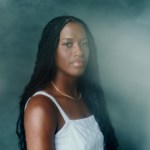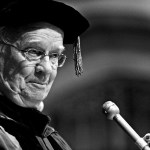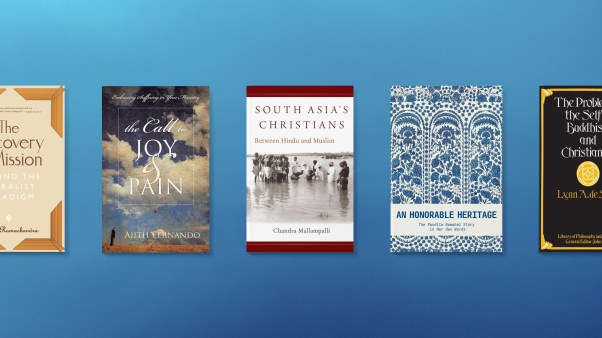Many scholars have written about the history of secularization in American higher education. But most of their accounts focus on elite, mainline Protestant institutions. I have been waiting for a book like Religion and the American University, which looks at how God fared among religious groups and institutions on the margins. Author James W. Fraser, an emeritus professor of history and education at New York University, delves into key parts of this neglected story.
He does so by sharing a helpful chronological narrative of religion in higher education after the Civil War, including case studies of particular colleges, more independent cocurricular movements, and campus religious organizations. Most of his specific case studies highlight institutions that were originally marginal to elite American higher education, such as historically Black colleges as well as those serving evangelicals, Jews, and Native Americans. Similarly, his account of cocurricular groups looks beyond well-known entities, like the YMCA and YWCA, to include college chaplains, Catholic Newman Clubs, Jewish Hillel communities, and others.
Rather than revisiting familiar narratives of religious colleges drifting toward secularism, Fraser helpfully focuses on the creative impulses that helped start these diverse institutions in the first place. That said, he does not neglect how secularizing trends in religious higher education have mirrored similar trends in mainline Protestant institutions, which often drifted away from historic Christian orthodoxy during the 20th century.
For example, Fraser quotes a 1937 graduate of the previously evangelical Mount Holyoke College, who noted that one need not “fear a revival of the revivals, or any other outdated custom,” because the school was “primarily interested in its relationship with the world.” Apparently, Mount Holyoke’s leaders had not been reading the Gospel or Epistles of John.
The book’s first major strength is Fraser’s astute attention to the diversity of religious higher education. Although he still neglects some more marginal examples—such as Adventist, Lutheran, Anabaptist, and Pentecostal institutions—he does an admirable job of expanding our understanding of American religious higher education.
A second major strength is Fraser’s attention to cocurricular groups, a marginalized topic in most historical discussions. As he helpfully recounts, this portion of the university carried the torch of student religious formation at a time, early in the 20th century, when educational leaders were casting this mission aside in the formal curriculum. Here, Fraser highlights the influence of campus chapel services, the YMCA and YWCA, denominational guilds, and chaplains at both private and public universities. His story also expands to include important non-Christian groups like Hillel International.
Fraser helps readers see the ebbs and flows of religion in cocurricular life. In the late 19th and early 20th centuries, he notes, the YMCA and the Student Volunteer Movement dominated the campus religious scene. By the mid-20th century, however, those groups had diminished significantly and college chaplaincy had exploded. Another major shift occurred in the 1960s and ’70s, marked by the emergence of new student groups like InterVarsity Christian Fellowship and Campus Crusade (now Cru).
Oddly, Fraser portrays the following two decades as a period of relative religious decline on campus. I say “oddly” because he makes clear that evangelical parachurch groups grew tremendously during this time. I can attest to that. When I was an undergraduate at Rice University in the late 1980s, over 10 percent of the school’s 2,500 students were engaged in Campus Crusade Bible studies. In reality, Fraser makes the common mistake of interpreting campus religious life through a mainline Protestant lens, attaching greater significance to a decline in college chaplains from established denominations than the corresponding rise of evangelical parachurch groups.
Fraser omits other important dimensions in his account of cocurricular organizations—one more historical and one more contemporary. Anyone familiar with the story of Christianity and intercollegiate sports knows that Christianity played a key role in early collegiate athletics, and Fraser could have given that subject greater attention. He also neglects the significant growth, in recent years, of Christian study centers, as well as Catholic institutes of thought (like the Lumen Christi Institute).
When it comes to broad themes, Fraser highlights two new ones that merit mention. First, he helpfully points out the role of competition—between cities and states, between denominations, or even within denominations—in reshaping the landscape of religious higher education. For example, we learn how Randolph-Macon College, one of America’s oldest Methodist schools, lost out on funding because Methodists in Georgia wanted their own college (present-day Emory University).
This competition also extended to cocurricular groups. Fraser reminds us that both Protestant and Catholic college leaders critiqued the advent of chaplains at secular universities. They feared losing revenue and support from Christian parents and students who might find these universities more attractive as a result. Likewise, leaders of parachurch groups, such as the YMCA’s John Mott, saw little need for university chaplains or pastors from specific denominations.
I hear the same concerns today, whether from administrators at Christian colleges, college pastors in churches, denomination-led student ministries, or parachurch staff at secular universities. Instead of trusting God and having a generous mindset toward fellow Christian laborers, they worry about a proliferation of choices shrinking their share of the student pie.
Fraser picks up on another important theme in addressing the practice of Christian hospitality on campus. As universities became more secular-minded in their approach to residential life, Christians began filling in the gaps. For instance, he highlights the first college chaplain, J. Leslie French at the University of Michigan, who saw providing hospitality as one vital element of his ministry. He and his wife hosted dinners for students most Friday and Saturday nights, a practice now emulated by many Christian study centers at secular universities.
Yet Fraser also recognizes that Christian efforts to extend campus hospitality sometimes resulted in religious tensions. He tells the story of a Hindu student, Anandibai Joshi, who came to the United States in 1883. She gained admission to the Women’s Medical College of Pennsylvania (today’s Drexel University College of Medicine), where she lived with Rachel Bodley, the Christian dean of the college. In deference to her religious beliefs, Bodley let Joshi cook vegetarian meals in her house. As Fraser tells the story, however, the dean “struggled with her sense that she should try to convert Joshi to Christianity and her responsibility to extend hospitality and respect to Joshi’s Hindu beliefs. The demands of hospitality won, and Bodley supported Joshi.”
I find it interesting that Fraser frames Bodley’s decision as a contest between hospitality and sharing the gospel. After all, most Christians would regard both as core duties of Christian outreach, even if they might worry about evangelizing in counterproductive ways. Unfortunately, Fraser’s false dichotomy often prevails today among many Christian college administrators, faculty, and staff members, who think they must refrain from challenging conversations or direct Christian witness for the sake of showing hospitality and respect.
Fraser ends the book by discussing the unique experiment occurring at Baylor University, my academic home for the past 23 years. Baylor’s goal is integrating the mission of Christian education with the intellectual aspirations of major research universities. One major challenge to this synthesis, however, is the persistence of a mindset pitting hospitality and Christ-animated learning against each other.
Fraser’s book, while excellent overall, has one area that would have benefited from a bit more precision and fewer broad generalizations: his account of religion’s role in the development of the curriculum.
In the introduction, Fraser tells us that early course offerings were “deeply suffused with Christianity.” On the same page, however, he appears to contradict himself, writing, “It may be surprising that there was so much of the so-called pagan classics and so little Bible in the curriculum.” There are certainly elements of truth in both statements. But readers who are unfamiliar with the historical details of Christianity’s relationship to early liberal arts models might find themselves confused.
A few pages later, Fraser gives a more accurate summary. “For all their focus on college creation,” he writes, “the founders of most schools did not put a lot of thought into the curriculum. They simply adopted the core of the classical curriculum as it was taught at older schools, especially Yale.” I would argue that this relative inattentiveness meant the curriculum was not “suffused with Christianity.” Instead, Christianity was merely a curricular add-on until the movement to integrate faith and learning emerged among evangelical colleges in the mid-20th century.
Moreover, Fraser misses certain aspects of how Christian colleges authored their own curricular innovations. His section on the academic study of the Bible repeats the view of older scholars who trace its origins to Yale in the early 1900s. However, my own research reveals that numerous evangelical colleges had already adopted this approach shortly after the Civil War, integrating the study of the Bible into the required curriculum rather than relegating it to required Sunday School classes and chapel services.
Omissions like these suggest the possibility of a more detailed story about the historical relationship between Christianity and the college curriculum, especially as it relates to Christianity’s influence (or lack thereof) outside of later religious studies courses. I hope Fraser, or another similarly gifted scholar, will devote a future book to telling it.
Perry L. Glanzer is a professor of educational foundations at Baylor University and a resident scholar with the Baylor Institute for Studies of Religion. He is the coauthor of Christian Higher Education: An Empirical Guide and The Outrageous Idea of Christian Teaching.





















